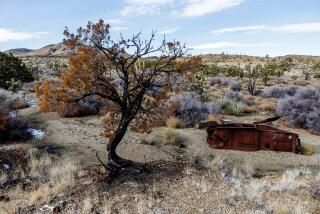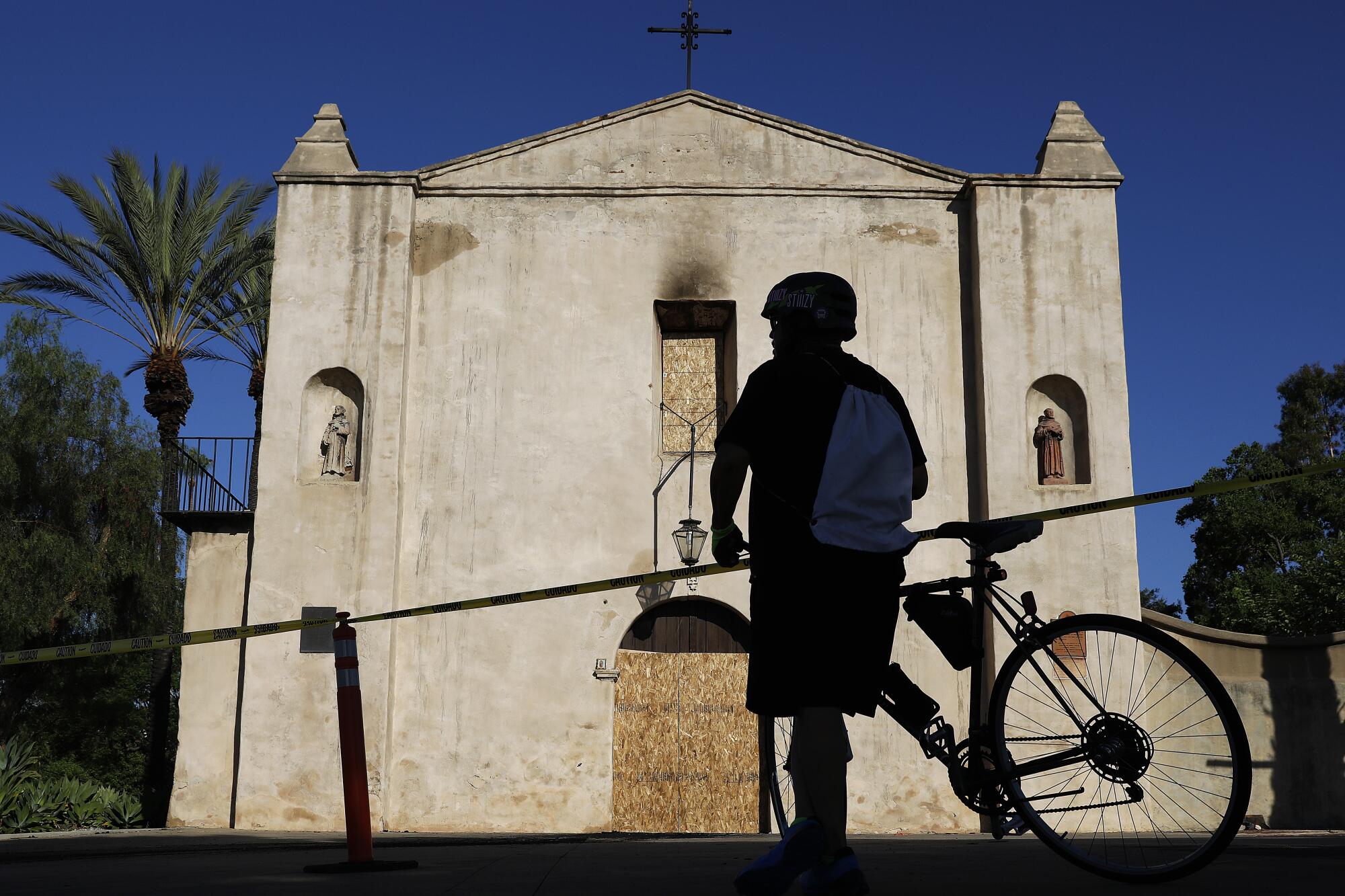
Edgar Hernandez fumbled with his keys as he tried to unlock the gates to the San Gabriel Mission cemetery just before 7 a.m. Sunday Mass.
The 38-year-old kept looking across the parking lot to the ruins of one of the oldest Catholic houses of worship in Southern California. The day before, fire had engulfed the 215-year-old mission church. The roof was destroyed; the pews, incinerated. Only the altar and adobe walls survived.
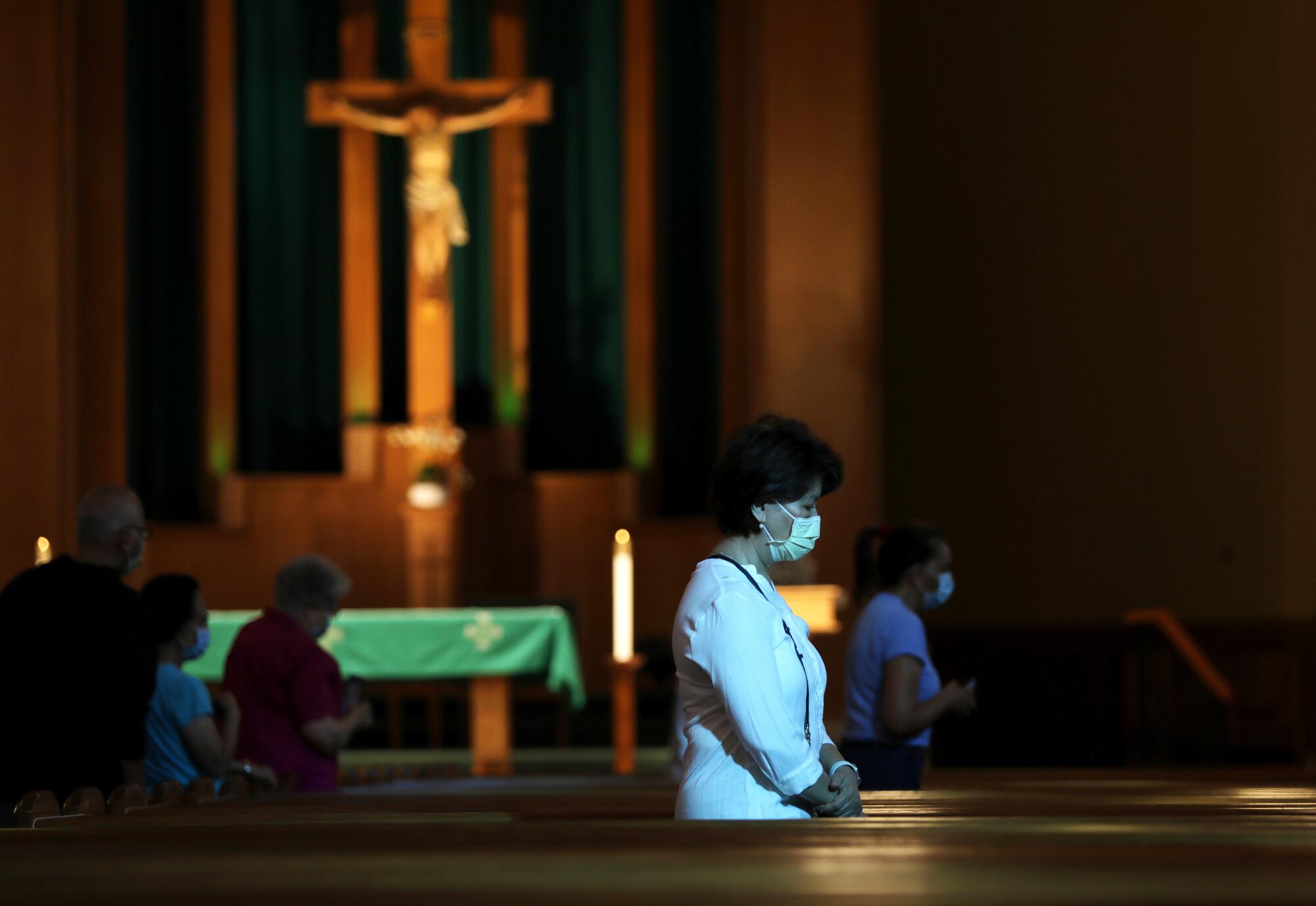
Sunday services went on as usual in a nearby chapel untouched by the fire, but the acrid smell of burnt wood filled the morning air. That’s not why Hernandez choked up.
“I baptized my kids at that church,” said the facility’s maintenance director. “I got married here,” he said, pointing to the chapel. “One day you come, and everything’s fine. The next day, everyone is hurting.”
Pain resonated around the valley that bears San Gabriel’s name in the wake of the fire, which local, regional and national officials are investigating. It manifested in ways that told multiple stories about the mission, which was founded in 1771.
For many, this was their neighborhood parish, where generations of the same family went to weekly Mass, baptized children and said goodbye to loved ones.
“You don’t really feel it until you see it in person, and then it hits home,” said Michael Arden, 50, a lifelong San Gabriel resident, who walked around the mission in construction clothes while holding a cup of coffee. “It’s going to mean that much more when it reopens.”
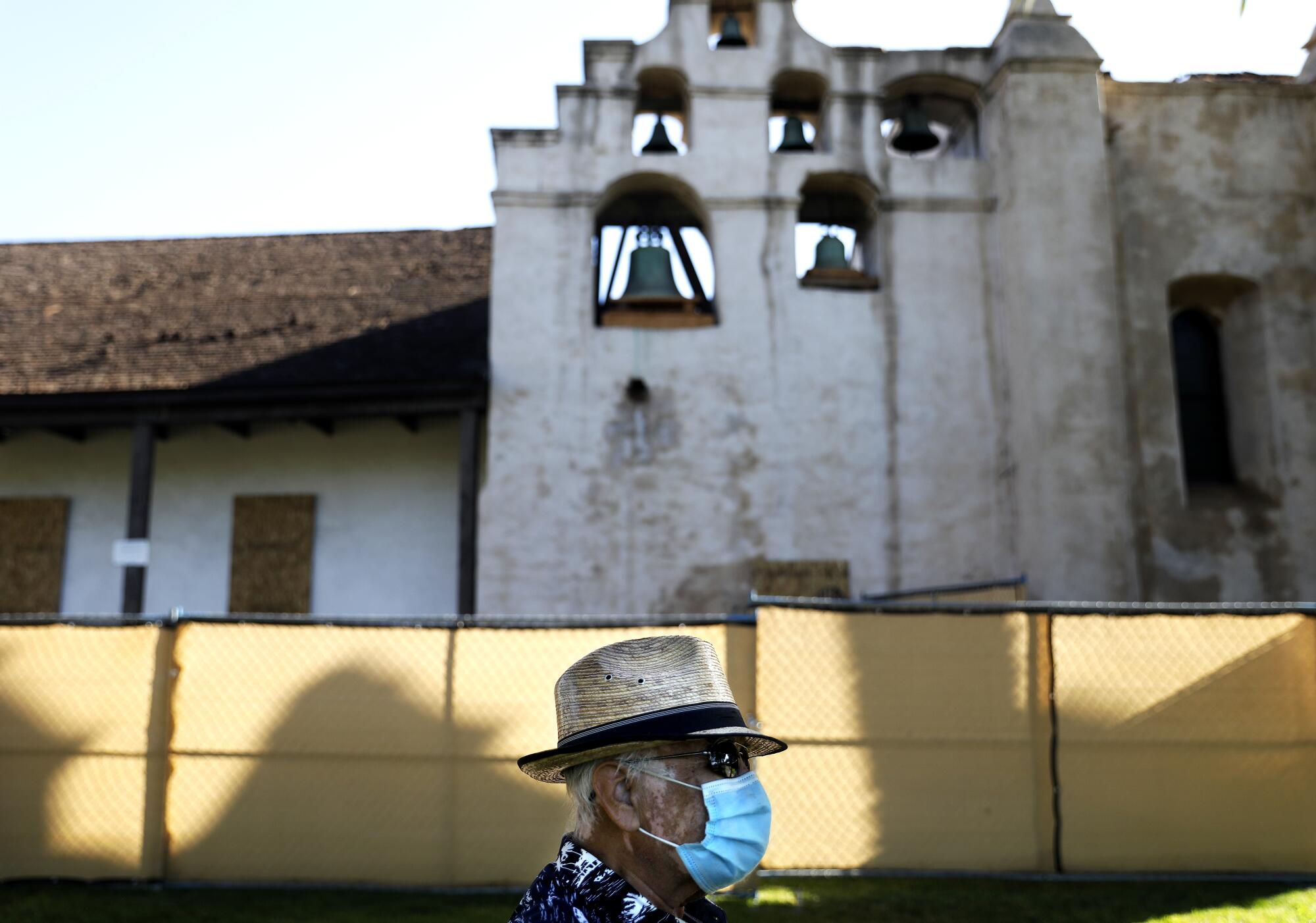
For others, the mission was a place that embraced them when few others would.
Altagracia Diaz Gamboa still remembers the welcome her family felt when they migrated from the Mexican state of Zacatecas to San Gabriel in 1968, when she was a preteen. “People greeted us with open arms,” said the 64-year-old, who held her wedding in the old mission church and saw her daughter marry there as well. “It’s always been like this. So much love is in there. The disaster is so tragic.”
Still others felt it was a place of horror: where Native Americans toiled under brutally domineering Spaniards and were nearly exterminated.
“I get why people are angry at [St. Junipero] Serra,” said an elderly woman who refused to give her name. Earlier in the week, a statue of the founder of the California mission system was moved to a private garden within the San Gabriel compound after activists tore down a similar monument near Olvera Street. “We should tell the truth about him.”
Even non-Catholics felt a connection to the building.
Sarah Zhi ducked under yellow caution tape that blocked off Mission Drive as she took her daily jog. Nearby, workers swept up ashes that blackened the sidewalk and measured the church’s front doors in order to board them up with plywood.
“It’s a Mexican church, but people are very nice there,” said the Chinese immigrant, who has lived in the United States for six years. She once went in with a friend and found it “beautiful.”
Robert Zhu has lived in San Gabriel for 30 years but has never stepped into the church.
“I read online that [the mission] was 249 years old,” he said, as a woodpecker banged on the windowsill of the fenced-off museum, which didn’t suffer any damage. “You can’t even imagine what was around back then. It’s important for people to realize that.”
People walked around the mission Sunday as if in a daze. Gone were the tears of the previous day, when dozens prayed in front of the then-smoldering structure. On this morning, the faithful snapped photos of the bas-relief sculptures outside the chapel’s entrance that told the story of the mission’s founding. They touched the statue of St. Anthony Claret, the founding father of the Claretian missionaries that now run the San Gabriel Mission. They gazed at a grapevine near the gift shop, its fruit weeks away from ripening.
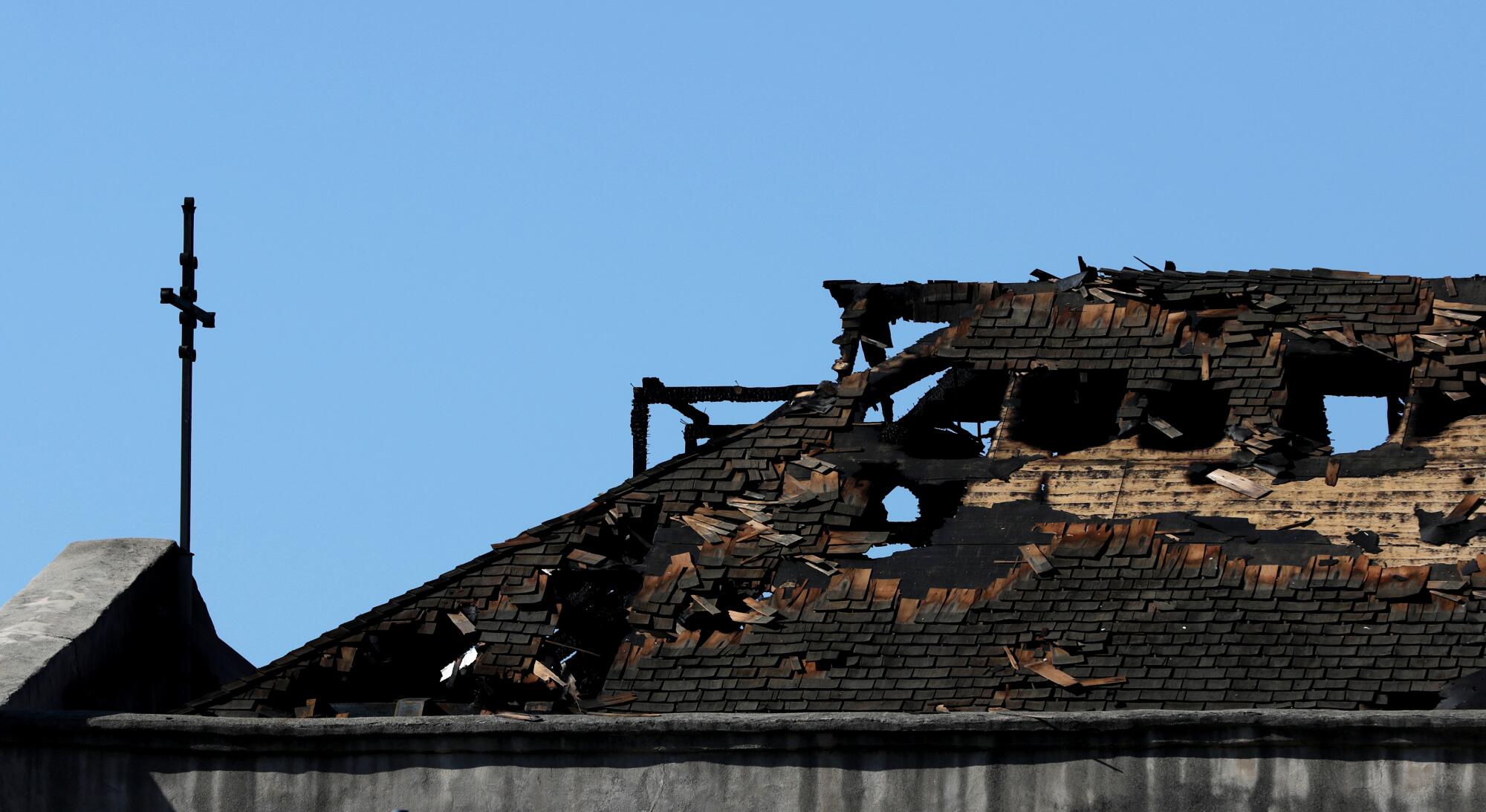
It’s as if they were reminding themselves of the adage “ashes to ashes, dust to dust.”
“This isn’t just a local parish,” said 58-year-old Erlinda Romo, who volunteered at the mission before the COVID-19 pandemic shut it down in March. “It’s a regional parish. There’s a connection that never leaves you. And like the phoenix, we’ll rise again.”
**
Long overlooked in the solar system of Catholic missions in Southern California — it’s not as famous as its San Juan Capistrano counterpart, as picturesque as the ones in Ventura and Santa Barbara, or as quaint as Mission San Fernando — the San Gabriel Mission had earned a reappraisal in recent years from academics and even putative adversaries, exacerbating the emotions felt in the wake of the inferno.
“There’s an extraordinary history there that we’re only just beginning to appreciate,” said UC Riverside history professor Jennifer Scheper Hughes, who’s part of a research project aiming to recast the study of California’s mission system.
Hughes has taken Mexican conservationists to marvel at the mission and its collection of arts and artifacts, only to see them shake their heads at its shabby upkeep and lack of access to the descendants of the Tongva people who built San Gabriel.
“One literally grabbed my arms by the fingernails and said, ‘It’s a treasure that’s being totally disregarded,’” Hughes said. “I just hope that this most recent incident wakes up the Archdiocese [of Los Angeles] to this.”
Deborah A. Miranda, an English professor at Washington and Lee University in Lexington, Va., is working on a project in which she’s visiting every California mission to “listen” and tell its story. For her, Mission San Gabriel imparts “a sense of fear and fortress. It’s built like a place to keep away the invading hordes.”
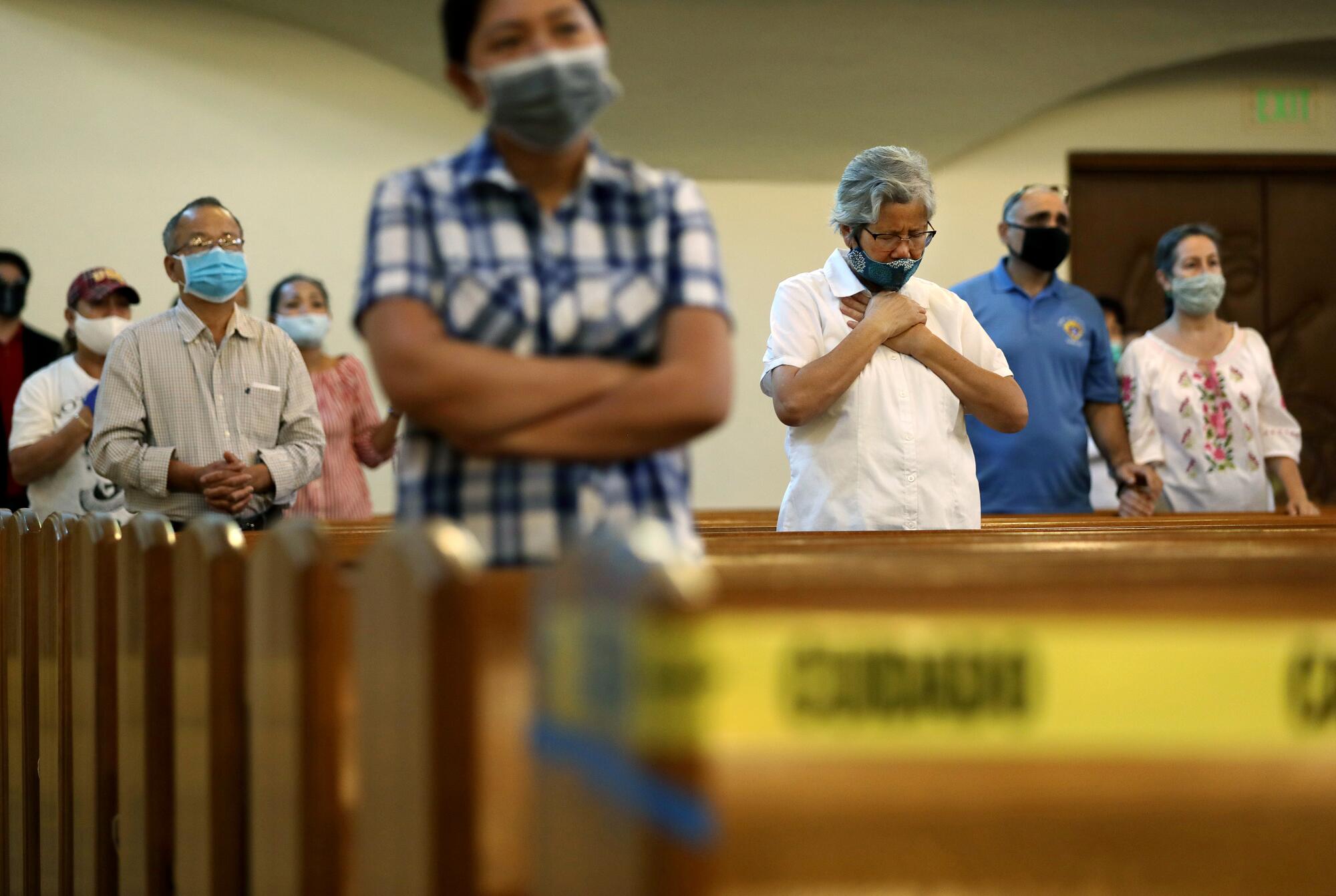
A member of the Monterey-based Ohlone Costanoan Esselen Nation, Miranda says many of the indigenous people she has talked to about the San Gabriel Mission fire feel conflicted.
“They feel exultant, and they feel this deep grief,” she said. “These are not positive places. But without them, we don’t have this proof that human beings could do this to other people.”
Carribean Fragoza, 39, co-director of South El Monte Arts Posse, said she grew up in the San Gabriel Valley thinking “that the mission was some great thing that everyone admired. But as I learned more about it, the more disenchanted I became with it.”
She’s no longer so fond of it, save for the story of the Tongva medicine woman Toypurina. In 1785, Spanish authorities arrested Toypurina just as she was about to lead an insurrection against Mission San Gabriel. Murals in her honor now dot Southern California, although none are near the mission.
“She really became a symbol that represented that resistance was possible,” said Fragoza, who included Toypurina’s story in a recently published collection of essays about El Monte that she co-edited. “She represents the stories that don’t get told.”
Fragoza hoped the fire might inspire a moment of reckoning for anyone connected to the mission, “because there’s still a lot of people who love it.”
That spirit of having roots was the theme for the 7 a.m. Mass held in San Gabriel’s chapel by Pastor John Molyneux. The Gospel for the day: the Parable of the Sower, in which Jesus taught disciples the importance of planting seeds in good soil so they would root well and yield their bounty by a hundredfold.
“Some of us are sad,” Molyneux told parishioners, who were still struggling to adapt to the other recent disaster in their lives: the coronavirus.
Masses had restarted just a couple of weeks ago and remain capped at 100. Masks are mandatory, and the musical director pleaded with churchgoers to “sing silently.” They sat in every other pew; to their side, the marble floors were marked with blue tape every six feet so people could practice social distancing during the Eucharist.
“Some of us are grieving,” Molyneux preached. “Some of us are angry. These are the right emotions for you today. However … we gather as resurrected people.”
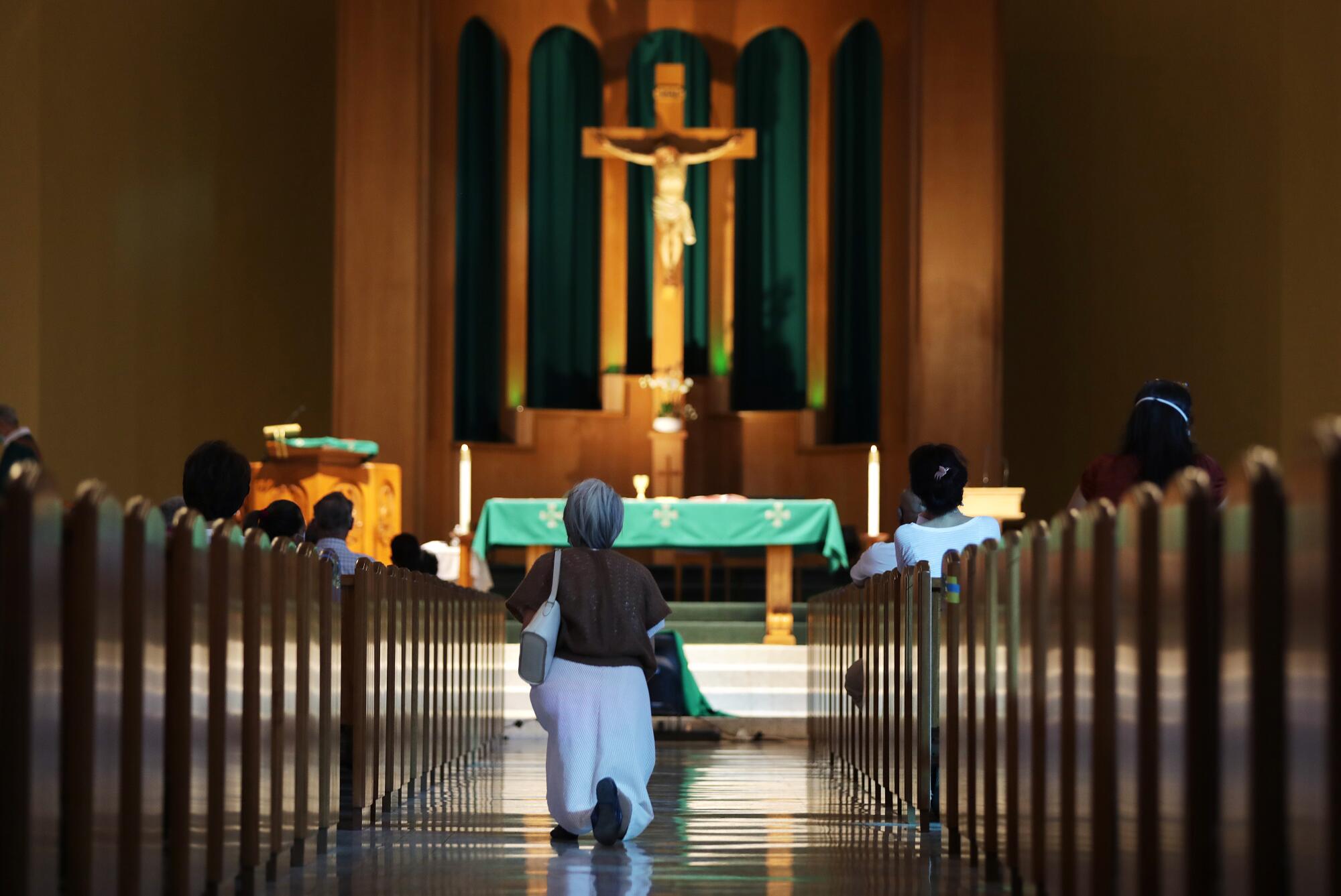
In a couple of hours, Los Angeles Archbishop José Gómez would lead a special Mass. But now, Molyneux wanted to remind his flock of the mission’s building material.
“Adobe gets stronger after intense heat,” he said with a wearied smile. “I love that image. We’ll come out of this stronger.”
More to Read
Sign up for Essential California
The most important California stories and recommendations in your inbox every morning.
You may occasionally receive promotional content from the Los Angeles Times.


